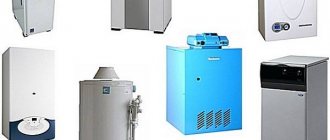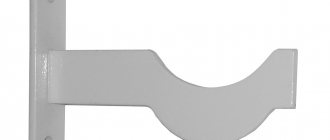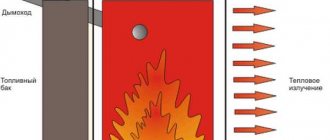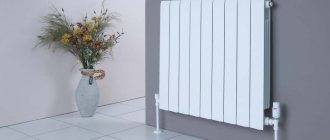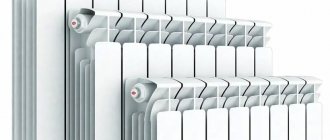But for the latter to become possible, orderly and reliable information is needed. Today, together with specialists from the Royal Thermo industrial group, we decided to collect complete information about what steel panel radiators are, highlight the most reliable facts from it, discard all unnecessary things and convey the essence to the reader in an easy-to-read form. This will help:
- Get a complete understanding of the features of steel panel radiators, as well as how they differ from similar heating devices.
- Find out how to choose the right steel radiators.
- Get information about how panel radiators are connected to various heating systems.
First, let's look at the features of panel radiators, without affecting the characteristics of the material from which they are made.
Features of panel radiators
Structurally, a panel radiator is quite simple: it is based on panels (most often there are two of them), inside which the coolant circulates. Each panel is made of two profiled plates connected to each other by contact and roller welding. Most often, convection elements and decorative grilles are installed between the panels; in some cases, these parts are missing (it all depends on the type of design).
Double-row and three-row panel radiators equipped with convection elements combine the functions of both a radiator and a convector.
Let's look at the differences:
- A radiator is a heating device that accumulates heat and transfers it to surrounding objects through thermal (infrared) radiation. It is also called radiant heat.
- A convector is a heating device that primarily heats the air. Air flows heat up as they pass through the fins and other convective elements of the device. What makes them move is the temperature difference in the room (warm air rises, cold air falls down).
Classic radiators (for example, cast iron) heat the room to a greater extent due to infrared radiation, and to a lesser extent due to convection light. In systems with convective heating, everything is the other way around.
Since a panel radiator combines such universal capabilities, it means it can heat a room more efficiently. In practice, this looks like quick and uniform heating of the room throughout the entire volume (both below and under the ceiling).
Konstantin VitalievHead of steel panel radiators Royal Thermo, .
A convection element installed between two thermal panels of a steel radiator provides approximately 50% of the heat, the remaining 50% is radiant heat from the panels.
Panel heaters that do not have convection elements are more closely related to classic radiators.
Such devices do not provide effective indoor convection, but they have another, very significant, advantage. Their design does not have hard-to-reach areas where dust and other contaminants accumulate. Such radiators are very easy to clean and maintain, which allows the devices to be used in facilities with special requirements for indoor hygiene: hospitals, schools, social centers, and so on. In this regard, panel radiators without convection elements compare favorably with other heating devices, be they classic convectors, cast iron radiators or other types of heating equipment.
Types of steel radiators
Panel steel heating radiators are divided into the following types:
- Type 10 - has no cladding, does not have a convector and only one row of panels is used.
- Type 11 - has one row of panels, one convector, but is not equipped with a grille in the upper part.
- Type 20 - equipped with two rows of panels, but without a convector but with a grille that releases warm air.
- Type 21 – double-row radiator, has convection fins in a closed casing.
- Type 22 – two panels, two convectors and a casing.
- Type 30 is already a three-row radiator, but without convection fins and with an air duct grille.
- Type 33 - uses three panels in its design, three convectors in a closed casing.
Based on this classification, it becomes clear that depending on their design, the quality and rate of heat transfer differs. Thus, radiators belonging to types 10 and 11, which do not have convectors, will provide heat only by directly heating the air in the room. This means that this will require either more time or higher system power. All radiators with convectors are the most economical and efficient of their non-convector versions.
Due to the fact that these products are light and oversized, this makes them not only easy to install, but also does not require much space for placement in apartments, which is important in modern conditions of catastrophic lack of space. All these properties of steel radiators attract owners of apartments and their own private houses today.
Steel panels: good or bad
Most steel radiators are affordable. Steel itself is cheap, and this is a fact, and the ease of its processing only plays into the hands of the consumer.
This feature mainly concerns panel radiators. Tubular steel radiators, for example, are difficult to manufacture and therefore have a higher cost.
Steel has good heat transfer. It is lower than that of aluminum, but on a five-point scale it can be rated at 5 (for aluminum it will be 5+).
From the point of view of environmental friendliness, steel radiators have no equal: in accordance with sanitary and environmental requirements, they can be used in almost any facility (even in hospitals and kindergartens).
Steel heaters are not without their disadvantages, but all their disadvantages are very controversial.
For example, the chemical properties of steel are such that corrosion is its faithful companion. This fact, according to ordinary people, “puts an end to” steel radiators (at least their use in centralized heating systems). In accordance with their logic, autonomous heating can be filled with non-freezing liquids and independently control the quality of the coolant. But let's turn to the opinion of a specialist.
Konstantin Vitaliev
A steel panel radiator can be used in absolutely any modern heating systems. Modern apartment buildings use closed (independent) heating systems. This means that the coolant in the heating circuit of an apartment building is heated through a heat exchanger installed in the ITP (individual heating point). The heat exchanger, in turn, is heated by coolant from the external boiler room. Thus, the heating system of the building is isolated and uses only its own coolant, the quality of which is easier to monitor.
Another disadvantage that is mistakenly attributed to all steel radiators is that these products are not designed for high pressure in the system. Indeed, a heater with a wall thickness of half a millimeter cannot withstand the same pressure as a panel radiator with a wall of 1.25 mm. Therefore, always pay attention to the specifications of the product, and problems will bypass you.
Additional restrictions on the operation of a steel radiator are, again, related to the electrochemical properties of steel. It is prohibited to drain coolant from a system in which steel radiators are installed (except in situations related to accidents or the need for preventive maintenance). If it is not difficult for owners of autonomous systems to comply with this requirement, then residents of apartment buildings can ignore it altogether.
Konstantin Vitaliev
In modern apartment buildings, the coolant has not been drained from the heating system for a long time. Therefore, there is no problem complying with the manufacturer’s requirements.
Where can I install such a battery?
Steel radiators can be installed in various systems, but each has certain nuances. Now we will look at them.
Autonomous heating systems
Steel appliances are great for freestanding structures. Home owners only need to monitor the liquid pressure in the system; it should not exceed 10-15 bar. In addition, attention should be paid to the quality of the coolant. Despite the fact that steel is relatively resistant to corrosion, it is not recommended to expose radiators to prolonged exposure to aggressive environments. The manufacturer guarantees that, subject to the use of filters and timely regulation of pressure in the system, the devices will last at least 20 years.
Steel devices can be used in both autonomous and centralized heating systems. First of all, they will last much longer.
Central heating
For buildings connected to a centralized heating supply, steel radiators are also suitable. The operating pressure of the devices is 10-15 bar. Considering that the pressure in the system is usually no more than 6 bar, a certain margin of safety remains. The quality of the coolant in such a system is far from recommended. The water is most often too hard with the addition of solid suspensions. All this leads to the gradual accumulation of deposits inside the devices and abrasive destruction of steel devices. They can work in a centralized heating system for about 10 years.
Steel equipment can be installed in trade pavilions, production facilities, warehouses and other structures with a closed heating system. The low cost of devices allows you to equip spacious buildings with minimal costs. Steel devices can be installed in almost any room, but they best demonstrate their qualities in autonomous heating systems.
We also invite you to listen to opinions from experts:
Steel panel radiators: overall characteristics
Combining the design features of panel radiators and the characteristics of the material from which they are made (in our case, steel), we get the following picture.
Konstantin Vitaliev
Steel panel heating radiators are the lowest cost per kilowatt of heat among heating devices. Therefore, they are widely used in mass construction (apartment buildings, administrative buildings).
And here are the qualities this popularity is based on:
- if we do not take into account the budget segment (products of very questionable quality), then steel panel radiators can be used as part of both autonomous and centralized heating systems;
- the same applies to the requirements for the characteristics of the coolant: high-quality steel panels work on any coolant (water, non-freezing liquids with a pH of 8 to 9.5, etc.);
- steel panel radiators provide uniform heating of the room throughout the entire volume and demonstrate high efficiency, regardless of the temperature of the coolant.
Konstantin Vitaliev
It has long been proven that when using low-temperature coolant, steel panel radiators are the most efficient heating devices. Even at a coolant temperature of 45°C - 50°C, the radiator is able to effectively transfer heat to the room.
Criteria for choosing steel panel radiators
Considering the almost complete versatility of steel panel radiators, the key criterion for their selection should be the quality of the product. Of all possible options, the budget segment should be excluded. The fact is that its true quality is unknown even to sellers. Product compliance with the international standard ISO 9001 should be a key focus for the buyer. On the territory of the Russian Federation it is confirmed by a certificate of conformity to GOST 31311-2005.
But the international standard is a concept very detached from Russian realities. No one is more familiar with the operating features of heating appliances in our country than domestic manufacturers. Therefore, one, but proven, domestic manufacturer is always better than two foreign ones.
Also, the main selection criteria include:
- heating system pressure;
- type of coolant used;
- radiator dimensions: for example, the width of the radiator installed under the window should cover from 50% to 75% of the width of the window opening (50% for ordinary residential premises, 75% for social institutions);
- features of the location of the heating wiring (if the wiring is in the floor, the radiator must have lower outlets for connection, if the wiring is built according to the classical scheme, the radiator outlets must be located on the sides).
The permitted pH level of the coolant, the permissible pressure in the system, as well as other equally important parameters are always reflected in the product data sheet.
For many, the aesthetic component is important, so we shouldn’t forget about it either. The color, which should match the overall style of the room, the presence of decorative grilles - all this can be of great importance if you care not only about comfort, but also about beauty.
What is the reason for the popularity of panel heating
Among the majority of options for constructing heating systems operating from the electrical network, panel heating is in high demand. Even for non-specialists, it is instinctively clear that the radiators in these systems should be some kind of panels that provide a convenient temperature regime. To be absolutely precise, with the help of electrical panels it is not a convenient temperature regime that is created, but specifically a feeling of thermal comfort for the people who are in this room.
What is the significant difference in the terms “optimal temperature” and “thermal comfort”?
If we are talking about a comfortable general temperature, then it means that the air in the room is heated to a certain temperature at which a person feels comfortable. For example, convector or radiator heating systems operate according to a similar rule. Moreover, there is no particular difference whether such devices operate from the electrical network or are heated due to the heat transfer process between the heat carrier and the heating device. If we are talking about temperature comfort, that is, in view of the feelings of the person in the room.
Surprisingly, a person can feel quite comfortable even at low general temperature values. For example, at only 18? C. This is achieved due to the fact that infrared electromagnetic radiation acts on the human body.
Working principle of electrical panels
The working principle of electric panel TENOV is to design a stream of infrared rays with a specific wavelength.
REFERENCE. The infrared range includes waves from the range from 0.77 to 340 microns.
Infrared rays pass unhindered through gaseous media that contain nitrogen and oxygen. And they are directly considered the main ingredients of our atmosphere. Only solid bodies are heated by infrared rays. This is why, at practically low air temperatures, people create a stable feeling of thermal comfort.
By the way. Building structures, furniture and other objects, when heated, themselves turn into sources of secondary heat radiation. And thanks to them, the average volume temperature increases.
Types of electrical panels
Very often, electric heating panels are classified according to their location. Distinguished by:
Ceiling electric panels can heat the entire area of the room, or can specifically create a comfortable regime for people staying in a specific area. Wall planes are generally located no higher than a person’s height in order to effectively waste electrical energy.
Panel emitters are also distinguished by their emission length:
- shortwave;
- medium wave;
- long wave.
A significant difference between these three groups, from the point of view of practical use, is that the main parameter, the heating temperature, depends on the wavelength.
Main. If there is no need for high-temperature conditions, then long-wave emitters (from 100 to 340 microns) are installed. Such panels usually give temperatures up to 140? C. Medium wave devices (from 15 to 100 microns) provide heating up to 400? C. The most powerful short-wave devices (0.76-15 microns). They can heat the front panel part up to 900?.
Advantages of panel heating
- Low inertia of systems. The activation of such a system can be felt within 10-15 minutes after switching on.
- No dust flows. Since there are no convective air flows during operation of panel systems, dust does not move from the part located at the bottom of the room to the top.
- There is no need for ongoing maintenance. Heating panels do not require continuous maintenance or operation monitoring.
- Beautiful appearance. Sometimes it is even difficult for an inexperienced person to notice the presence of heating equipment in a room.
- Compactness. Unlike convector heating systems, panel heating systems take up almost no space in the room. Scope of application.
Panel radiators can be mounted on quite different objects. These can be rooms in residential buildings and apartments, as well as industrial and warehouse-type premises. They are very popular on objects of significant area and volume.
Features of installing panel radiators
Installing a panel radiator, as well as connecting it to the heating circuit, are activities that are not particularly difficult. If the radiator is chosen correctly and its outlets are located in accordance with the characteristics of the heating wiring, its installation takes a minimum of time.
Among models with bottom connections, wrap-around radiators are very convenient to install. There are no welded brackets in their design, so the product can be connected to the wiring on both the left and right sides.
In models with side connection, convenient connection to the system is provided by four inlet/outlet holes, which are located on the sides of the product.
If the delivery set includes original brackets and fittings from the manufacturer, as well as additional fittings (Mayevsky taps, thermostatic valves, etc.), then quick connection, as well as the tightness of the connections, will be guaranteed throughout the entire period of operation.
Features of operation of panel heating radiators
Peculiarities of operation of panel heating radiators
Steel is characterized by reduced corrosion resistance. Therefore, experts prohibit draining the coolant until the end of the heating period. This procedure can be done for short periods of time, for example, for repairs or changes to the network. Short-term emptying and filling of the radiator have a negative impact. Therefore, it is recommended to carry out all necessary repair work at one time.
It is also not recommended to turn off steel batteries using taps. The interaction of a metal with a liquid produces a chemical reaction with the release of gases. Therefore, when installing radiators, an air vent (the so-called Mayevsky valve) must be installed.
An air vent is a special manual valve for removing air. If you do not bleed air in time, the radiator will stop functioning normally. There are also valves with an automatic mechanism, which eliminate the need to monitor the air level in the radiator. You can determine the presence of air chambers in the system by looking at the top of the radiator - it remains cold.

